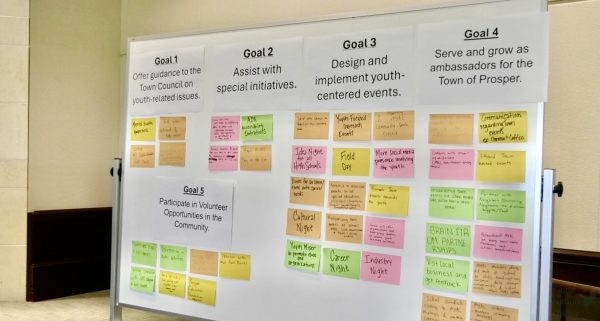Telehealth: COVID-19 moves medical care to digital platform
A screenshot shows the webpage of Prime Psychiatry’s new feature, Telepsychiatry. Telepsychiatry is a form of telehealth that allows psychiatrists to video call with patients. Prosper ISD has partnered with Children’s Health to bring telehealth to district students. “Telehealth has made it more convenient for me to see my doctor,” freshman Sundari Jackson said. “My mom works long hours so finding an appointment time was difficult in the past. Now I can go to an appointment on my computer while my mom is at work.”
January 21, 2021
Due to the COVID-19 pandemic, medical policies transformed, reducing barriers to healthcare and promoting the use of telehealth as a way to deliver acute, chronic, primary and specialty care. Professional medical societies have endorsed the use of telehealth, highlighting Prosper ISD’s decision to partner with Children’s Health to offer these services. According to the CDC, telehealth can also improve patients’ likelihood of recovery and stability after treatment. Now more than ever, telehealth is emphasized in guidelines for safety during the pandemic. Despite telehealth existing for over a decade, it’s relatively unknown as a platform.
Telehealth is the distribution of health-related services and information via electronic information and telecommunication technologies. It allows long-distance contact, intervention, monitoring and diagnoses between patient and doctor. Although an available practice since the early 2000s, it was barely put into action by clinics and offices. Due to the pandemic, medical groups have searched for another way to care for patients while preventing the spread of the coronavirus among visitors. They have turned to telehealth as a successful online method of patient contact and treatment.
Prosper ISD partnered with Children’s Health in 2019 to provide school-based telehealth for district students. The program provides students who become ill at school with convenient, online access to Children’s Health professionals. With a completed consent form and parent permission, a school nurse can use video technology to connect the student with a doctor or pediatric nurse practitioner at Children’s Health. The student can receive a diagnosis and have prescriptions sent to a pharmacy, all without leaving school for an in-person doctor’s appointment. Prompt examination and treatment by a provider reduces absenteeism and helps keep children in school, healthy and ready to learn.
North Texas medical and counseling centers including Planting Seeds and Baylor Scott and White have partnered with Blue Cross Blue Shield of Texas PPO (TXBLS) to bring telehealth to patients.
“Telehealth has been an invaluable resource to Prosper ISD,” Superintendent Holly Ferguson said. “The service has allowed us to provide immediate healthcare services to our students, which has assisted our families in getting their child on the mend sooner.”
Telehealth keeps treatment private between the patient and the doctor, in the comfort of the patient’s home. Those with anxiety or similar conditions who worry about the task of visiting a doctor’s office can be relieved to find out they are simply a click on the computer away.
A survey by Rice University found that survey respondents under-report mental health conditions 36% of the time and under-report prescription drug usage 20% of the time. People suffering from all sorts of health problems will often view them as either mundane or not worth the trouble of going to the doctor, and public stigma plays a huge part in reluctance to visit the doctor’s office.
Public stigma is the reaction that the general population has to people with mental illness. Self-stigma is the prejudice which people with mental illness turn against themselves. Both types of stigma prevent potential patients from receiving care that would make their lives much easier and happier. Avoidance of medical treatment by mentally ill persons can lead to suicide, and it’s critical that they can access treatment without fear of the people around them. Everyone deserves equal access to medical care.
As well, telehealth provides relief to low-income patients and those without insurance. In most cases, telemedicine service can help to reduce the total cost of the healthcare system.
COVID-19 continues to push boundaries of what technology can do, as professionals race to keep up with it. As the months pass, it is a goal that medical services and healthcare will continue to advance and become accessible to the whole population.





















